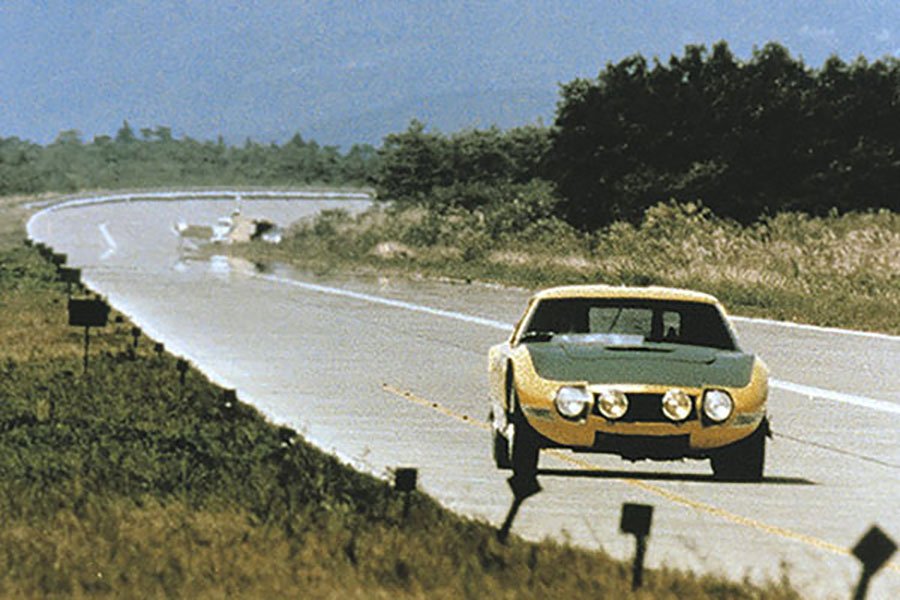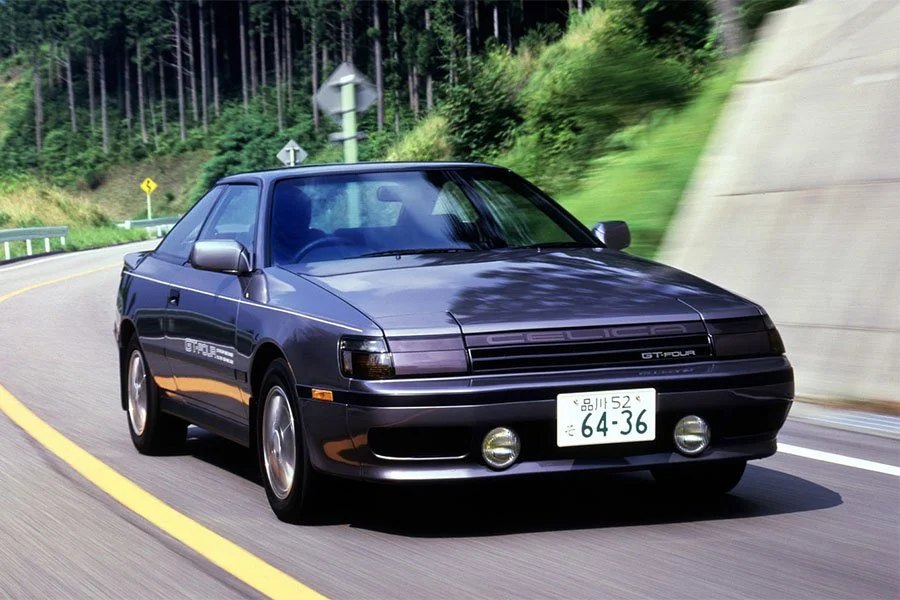Guide: Toyota 2000 GT World Speed Record - a Historical & Technical Appraisal
/BACKGROUND
After encouraging results with the 2000 GT-based 311 S at the 1966 Japanese Grand Prix and Suzuka 1000km, Toyota decided to attempt a series of high speed endurance records.
The choice of location was simple.
In 1964, the Japanese Automobile Research Institute had opened an oval proving ground at Yatabe, 60km north-east of Tokyo. The 5.5km circuit was perfect for such a feat.
Over the course of three days in early October, Toyota planned to go for a host of records ranging from 1000 to 5000 miles, 6 to 72 hours and 2000 to 15,000 kilometres.
The 2000 GT that underwent special preparation for the effort was actually one of the aluminium-bodied 280 A / I pre-production prototypes. Along with the pair of special 311 S variants, it had been entered for the Japanese Grand Prix at Fuji on May 3rd.
Mitsuo Tamura was expected to race the lightly modified machine, but it caught fire during practice while being driven by Sashio Fukuzawa.
Fortunately, damage was slight and, as it was among the lightest 2000 GTs around, Toyota decided to configure the car for record setting at Yatabe.
Preparation was handled by TOSCO (TOyota Sports COrner) now TRD (Toyota Racing Development).
TOSCO had previously assembled the 311 S racing cars.
Backing was secured from title sponsor, Esso, who requested the car be painted yellow and green. In addition to some finance, Esso also supplied an aviation fuel truck that could fill the 2000 GT’s enlarged 144-litre petrol tank in just 25 seconds.
Attracted by the marketing benefits of a successful record attempt, automotive parts manufacturer Nippondenso and NGK spark plugs also came on board.
MODIFICATIONS
Compared to the standard 2000 GT, modifications were limited.
Like the 311 S, the engine was enhanced with three Weber 45 DCOE carburettors and a free flow exhaust system.
To maximise top speed, the lowest possible axle ratio was used.
The retractable headlight pods were removed and riveted panels fixed in their place. Long-range Lucas headlights were installed either side of the nose intake and TOSCO added a pair of powerful Marchal spot lights.
The front lid came with a cut out for quick fluid top ups and a Plexiglas bug deflector.
Practically all superfluous body trim was discarded.
The rear quarter windows were blanked off. On the right-hand side rear window, filling holes were added to enable quick oil changes for the gearbox and rear axle.
Top speed was said to be 144mph compared to 138mph for the standard 2000 GT. However, in the interest of reliability, a cruising speed of between 125mph and 130mph was strictly adhered to during the record attempt.
PREPARATION
The official record date was scheduled for October 1st 1966.
Beforehand, Toyota were permitted four practice sessions at the Yatabe circuit.
The first practice session took place in mid July followed by the second a couple of weeks later in early August. Both ended prematurely with engine failure.
Two tests followed in September. At the first, the engine lasted 25 hours after which a series of oil pump modifications were made.
In late September, the car promisingly did 10,000km in torrential rain before severe weather curtailed any further activity.
RECORD ATTEMPT
For the FIA sanctioned record attempt that began on October 1st, three teams of four or five mechanics worked round the clock in shifts.
The five drivers, Hiroshi Fushida, Tomohiko Tutmi, Sashio Fukuzawa, Mitsuo Tamura and Shihomi Hosoya, each did two-and-a-half hour stints at the wheel.
Once again, stormy weather meant the track was frequently soaking wet.
Nevertheless, in a display of remarkable reliability, the 2000 GT was only forced to stop for a puncture and two collisions with small animals.
The drivers sustained an average speed of over 200kmh for three days straight and set 13 new international records.
Toyota established benchmarks for time or distance over 1000 miles, 2000km, 2000 miles, 5000km, 5000 miles, 10,000km, 10,000 miles, 15,000km, 6 hours, 12 hours, 24 hours, 48 hours and 72 hours.
Most of these records subsequently fell to Porsche when a trick 911 R ran at Monza in November 1967.
SUBSEQUENT HISTORY
Unfortunately, Toyota’s record car was later destroyed in a pace car accident. The remains were scrapped.
A replica has since been created for the factory collection.
Text copyright: Supercar Nostalgia
Photo copyright: Toyota - https://global.toyota/



























